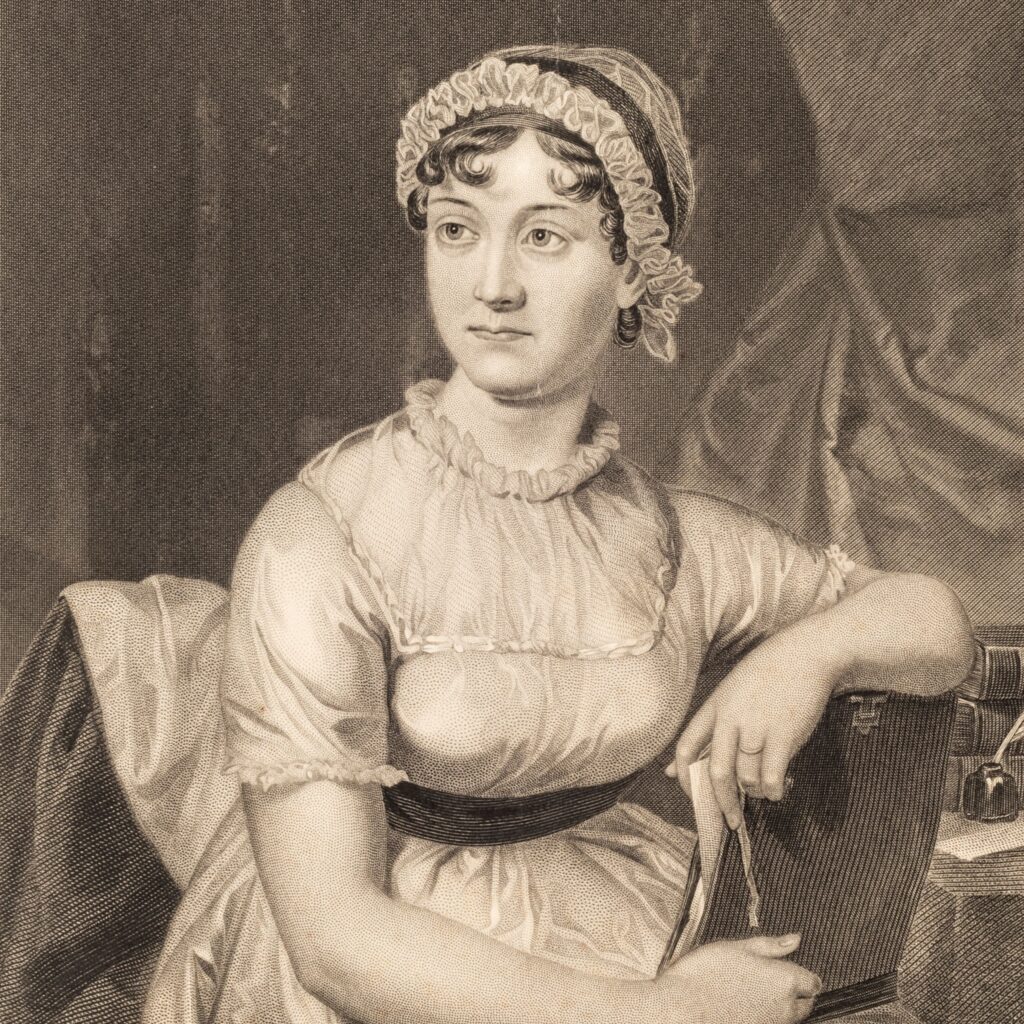When you think of Jane Austen, do you picture a serious-looking lady, in a muslin dress and cap? The only known portrait of her, produced in her lifetime, was created by her sister Cassandra Austen, dating from circa 1810, and hangs in the National Portrait Gallery Collection.
We have no way of knowing how true a likeness it is. In it, she looks rather “vexed” – with arms crossed, eyes locked on a subject to her right, and lips set in a firm line. It hints at her skill of observing others closely, yet keeping her thoughts to herself. Today, a video clip would capture her laughing uproariously, and we would be able to see her face in a different way – but with just one image to imagine her by, we have to rely on her characters and letters to know she was a woman of great humour and wit.
Other than Cassandra’s sketch, there are no other authenticated portraits of Jane Austen made in her lifetime. Our current Illustrating Austen exhibition features a Jane Austen print on paper, dated circa 1900, which was inspired by her sister’s drawing. This mass-produced portrait appeared in the front of many editions of her novels, and has become the iconic image of Austen, thanks to its widespread reproduction during the twentieth century. Unfortunately, we don’t know who created this likeness.
On 3 October, Helena Kelly will be visiting the Holburne to give a ‘teatime talk’ about her new book: Jane Austen, The Secret Radical. Helena challenges everything we think we know about Jane, suggesting she was a passionate woman living in an age of revolution; who used her writing to grapple with the weightiest of subjects – feminism, slavery, abuse, the power of the Church, even evolution – at a time when to write about such things directly was seen as akin to treason.
We may never know for certain if Jane Austen had crows feet from laughing so often or if she was filled with zeal for social reform – yet the fact that we are still keen to discover more about her after 250 years is testament to the enduring appeal of her writing, and her special place in the hearts of readers across the globe.
Image credit: After Cassandra Austen, 'Jane Austen', print on paper, circa 1900 © The Holburne Museum

